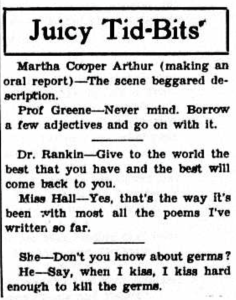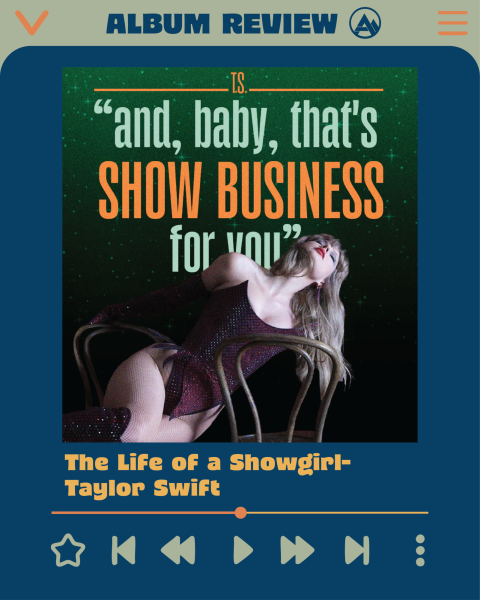“Last Night in Soho” review: A neon nightmare
November 12, 2021
Nowadays, it’s becoming more common for directors to take a leap outside of their genre to pursue others, specifically with horrors and thrillers. Jordan Peele, comedian and writer, highlighted this trend with the hit 2017 movie “Get Out” and his 2019 follow up “Us.” Most audiences are intrinsically motivated by these breaks in type, especially when the differences between genres are so stark. It’s fascinating for film lovers to see how these creators approach something that’s so vastly different from what most are used to, regardless of the quality of the end product. Fortunately, most audiences have been pleased by this dissonance among filmmakers, and director Edgar Wright manages to embrace his own metamorphosis with “Last Night in Soho.”
In May, the trailer for “Soho” debuted advertising a similar, coming-of-age scenario with a horrific mystery element lurking beneath the surface. Naturally, this premise is bound to pique curiosity, yet having Wright at the helm of this film acts as a pleasant twist to a familiar story. Known best for his 2017 work “Baby Driver” and 2010s “Scott Pilgrim vs. the World,” Wright has always had a taste for craziness. Wild, absurd concepts that shine through with over-the-top performances from the cast, as well as a post-production process that always justifies the film’s outrageousness. Now, with a much simpler and more grounded story, Wright shows off a new set of skills that often work shockingly well but are sometimes held back by his affinity for the more humorous and energetic sides of life.
“Soho” is led by actress Thomasin McKenzie, who plays Eloise, a college-aged outsider looking to pursue a fashion career after moving to London. It’s easy to empathize with her, partially due to her glowing positivity but also because of the energy she brings to the role. She’s extremely captivating, especially when faced with usual day-to-day struggles, such as getting to class on time or dealing with a rude roommate. Eventually, she meets Sandie, an aspiring singer from the 1960s played by Anya Taylor-Joy. In the beginning, Sandie appears as a ghostly memory and soon begins to intertwine her dark past with Eloise. As the film progresses, Eloise becomes increasingly uneasy as she unravels the truth of Sandie’s mystery.
Taylor-Joy is a force to be reckoned with on screen, most notably from last year’s “The Queen’s Gambit.” While in “Soho” she is not the central character, she is the biggest mystery of the film. Her charisma does not go unnoticed either, but it’s admittedly difficult to latch on to anyone in the cast other than McKenzie. Additionally, it’s fantastic to see someone do so much with a role that provides such minimal dialogue. These actresses excel at utilizing physicality to convey emotion, whether through something as simple as dancing or something more complex, like avoiding creepy old men.
These actresses give the film a certain level of energy. The tone and the atmosphere are all supported by McKenzie and Taylor-Joy’s stand-out performances, but Wright doesn’t settle for just good acting. His energy is felt through various aspects of the film, most notably via the large ensemble sequences involving set design as specific as the choreography. The writing was also refreshing, emphasizing relatable, real-life scenarios riddled with dark humor. These elements do wonders in allowing the film to fully commit to the story it’s telling: one of greed, seclusion and morality.
One specific atmospheric detail in “Soho” that often stuck out was the implementation of music, a staple in Wright’s films. The music tends to reflect the general mood of the situations or the emotions of the characters. In this case, McKenzie’s character has a particular liking toward ’60s music, which plays throughout the film. Oftentimes this music works perfectly, yet it sometimes has a hard time fitting in with horror and thriller elements that are so prevalent to the story.
There are quite a few times where “Soho” doesn’t specify how it wants the audience to feel. In addition to the infrequent music gaps, there are also set elements that didn’t make me feel as scared as I would’ve liked. For example, the lighting is often extremely bright and colorful and, while this can make for an effective choice, it’s a little too neon for the scarier side of “Soho.” It works in the beginning of the movie, but once the action gets going, it becomes difficult to hone in on the more gritty elements. It’s possible the film’s horror traits could have benefitted from having their own, separate atmosphere with an emphasis on isolation.
Nonetheless, the set pieces are fantastic and certainly earn my respect. The incredible atmosphere of modern-day London, in addition to its 1960s counterpart, make the film look and feel pretty amazing. Despite a few shortcomings, Edgar Wright delivers a stylish yet chilling coming-of-age film peeking into the darkest corners of human nature while also providing moments full of heart and empathy. “Soho” is quite different from Wright’s previous works but is thoroughly entertaining and serves as an example of a good, simple thriller done well. “Last Night in Soho” gets a rating of 7.3 out of 10.

















